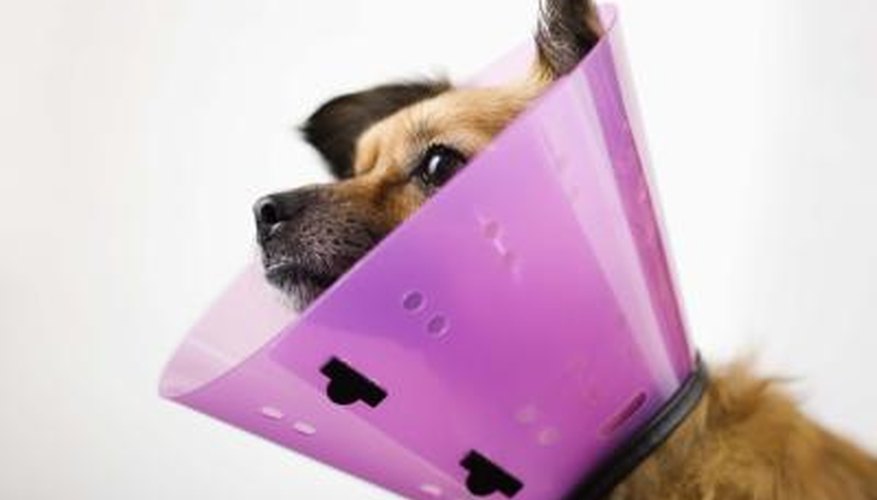Luxating patella is a painful degeneration of the knee joints. It can occur in either front or rear legs. More severe cases require surgical intervention to repair the joint. Knowing what variables typically cause price fluctuations in a plantellar luxation sugery will allow you to tailor the price quote to your particular dog. The cost of the surgery itself is often the least of the financial considerations for this type of disease.
Grades of Luxating Patella
Your dog will require X-rays to determine the extent of luxating patella. The knee joints get a grade based on the deterioration of the joint. The grades are I, II, III and IV. The first two degrees of damage are mild and do not usually require surgery as a remedy. Your vet will make recommendations based on the severity of the problem to help alleviate the pain, and more important, to stop further damage when possible. It is very important to keep a constant watch on joints once a determination is made of a mild problem to be sure it does not advance. Catching the problem in time is a large factor in the success of the overall treatment, including surgery when needed.
- Your dog will require X-rays to determine the extent of luxating patella.
- Your vet will make recommendations based on the severity of the problem to help alleviate the pain, and more important, to stop further damage when possible.
Pre-Surgery Costs
The largest expense for pre-surgery expenses are the X-rays to determine the problem and extent of damage to the joints. Joint X-rays are expensive because dogs require anaesthesia so they stay completely still in unusual positions. X-rays range between £65 and £325.
Surgery
The average cost of the luxating patella surgery itself is between £650 and £1,300 as of 2010. The variation depends upon the extent of damage, how much repair is necessary, whether artificial joints are used and how much anaesthesia is needed.
Postoperative Care Costs
Postoperative care includes overnight stays in the hospital and medications to keep the dog sedated during the time. The length of the stay will range between three and five days depending on how quickly it recovers from the anesthetics, and how long it takes for the dog to learn how to use his injured leg(s) with or without help from others. The nightly cost is determined by the size of the dog, the amount of nursing required and the amount of drugs required. It can build up quickly to the thousand-dollar mark.
- Postoperative care includes overnight stays in the hospital and medications to keep the dog sedated during the time.
Medications
Painkillers are a typical medication for dogs with luxating patellas. They help keep the dog from overexerting before surgery and possibly avoiding surgery altogether. Painkillers also keep the dog sedated enough following surgery so they do not damage the joint area before it has a chance to fully heal. Painkillers cost between £97 and £195 per prescription. In some cases, when used in order to prevent surgery or prolong the time before surgery is necessary, it can take several prescriptions per year.
- Painkillers are a typical medication for dogs with luxating patellas.
Variables
The size of the dog creates many variables, from the cost for postoperative boarding to the amount of anesthetics needed. Other options also depend on dog size. Artificial joints are used in larger dogs to support their weight post-operation, where smaller dogs pose less of a strain on joints and usually do well without them.
Follow-ups
A dog needs regular follow-up visits with an orthopaedic specialist and yearly X-rays to be sure the problem is not returning. These visits will run between £130 and £325 depending on the number of X-rays needed and the size of the dog.
